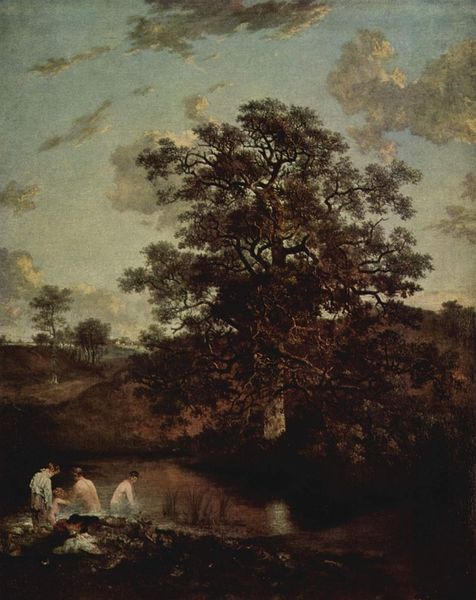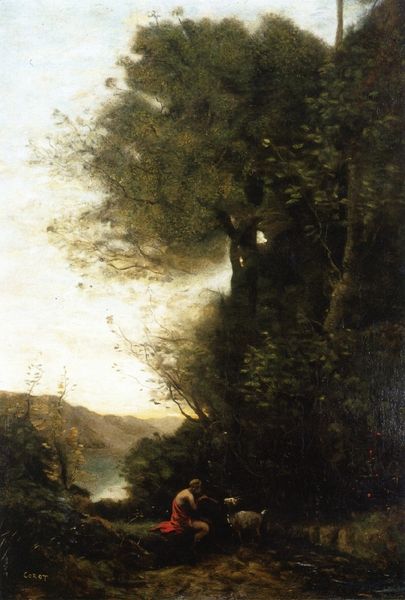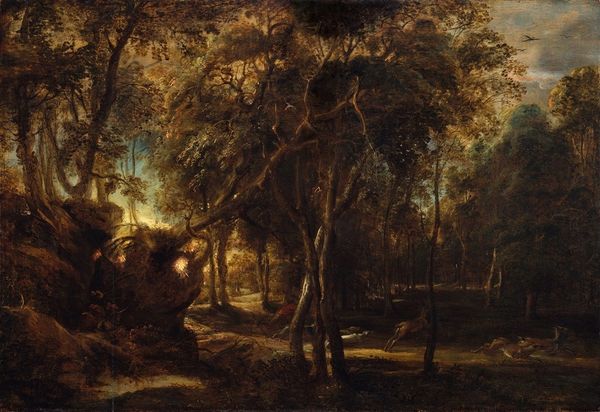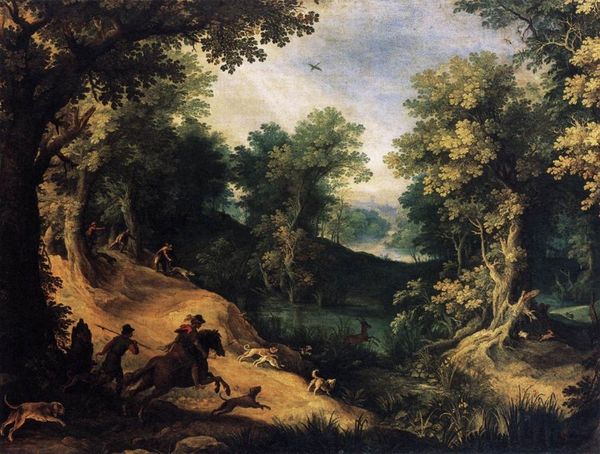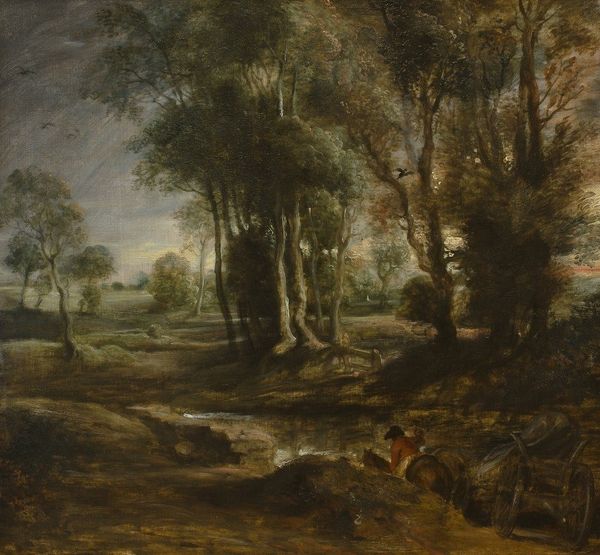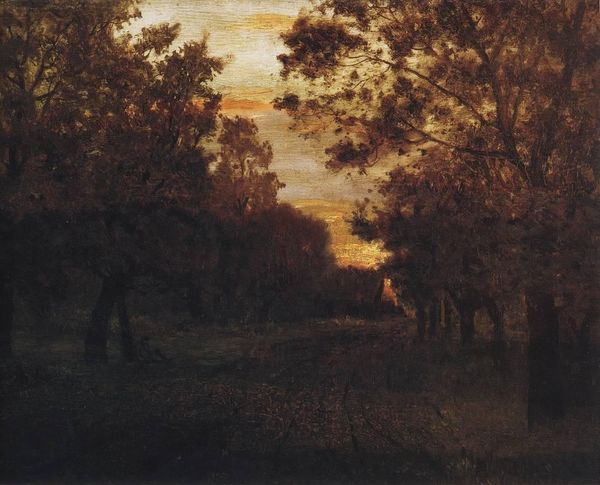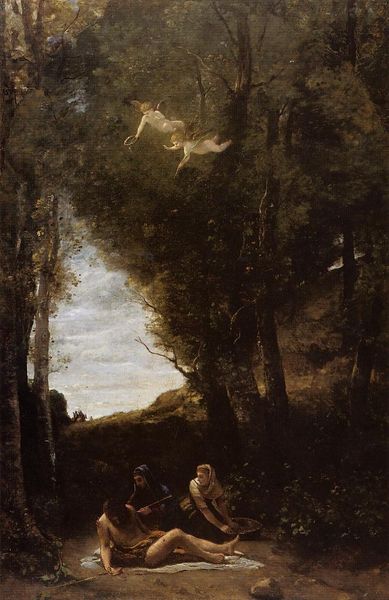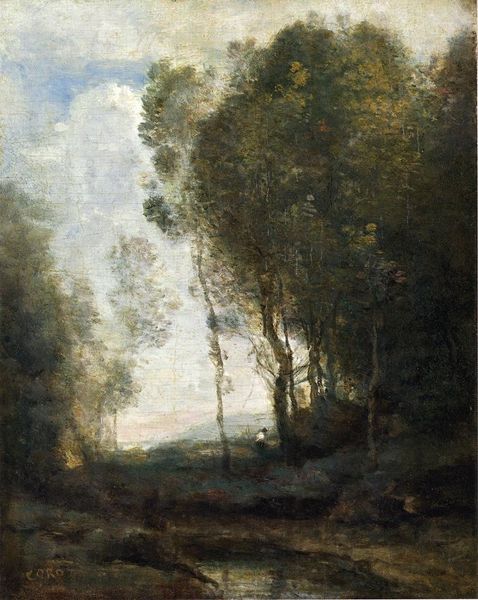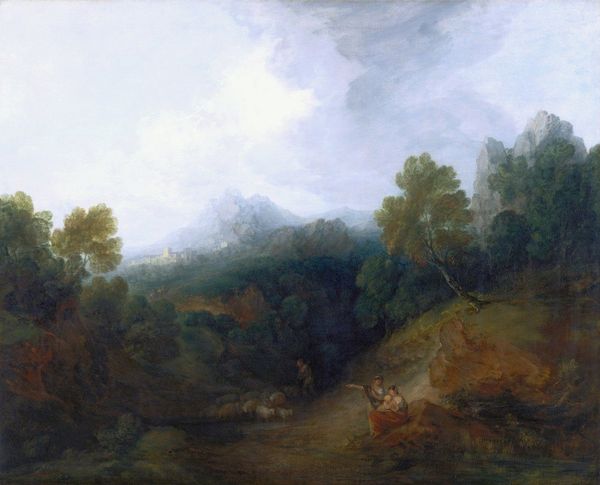
painting, oil-paint
#
tree
#
sky
#
painting
#
oil-paint
#
landscape
#
figuration
#
oil painting
#
forest
#
romanticism
#
water
#
naturalism
#
nude
#
nature
Copyright: Public domain
Curator: At Nature's Mirror, painted by Ralph Blakelock, presents a deeply immersive scene rendered with oil on canvas. Editor: My initial response is a sense of quiet solitude; there's a figure, but dwarfed, almost swallowed by the immensity and murk of the surrounding landscape. A study in melancholic introspection. Curator: Blakelock's technique involved layering paint and scraping it back, achieving this textured effect which evokes the density of the forest. His process was very intuitive. What meaning do you find embedded within this scene? Editor: The forest and water possess deep-seated archetypal resonances; a figure beside a forest stream—this image immediately connects with the idea of purification or baptism and is further strengthened by its invocation of naturalism, lending credibility to it through its commitment to faithfully portraying tangible objects in space without alteration. Curator: Interesting perspective. I consider how he handled the oil paint. Look at the way the trees emerge from this nearly undifferentiated space; it gives form to primal nature through a build-up of pure matter that evokes something more sublime, even in the quotidian. The very stuff from which the trees are represented echoes the physicality of nature itself. Editor: True. Symbolically, water reflects not only physical images but the inner self, conscious and unconscious. It’s tempting to read the figure as representing Psyche perhaps or even Echo—lost, reflective figures steeped in classical memory, contemplating something beyond the material. Curator: I’m wondering though, can we detach such visual symbolism from its economic realities? His innovative paint handling became Blakelock's brand, yet he also endured constant financial instability which fueled that practice, so we are dealing with both creativity and survival. Editor: Perhaps that financial insecurity echoes in the somber mood of the piece. I find the continued interplay of visual cues from antiquity is striking. This Romantic interest reveals the era's investment with art that conjures emotional landscapes from the collective, cultural wellspring. Curator: By observing Blakelock’s physical manipulation of paint and also examining that era reveals how closely Romantic-era artists were trying to find innovative solutions within very restricting boundaries in the market, I'd say! Editor: A potent and important convergence we’ve surfaced.
Comments
No comments
Be the first to comment and join the conversation on the ultimate creative platform.
